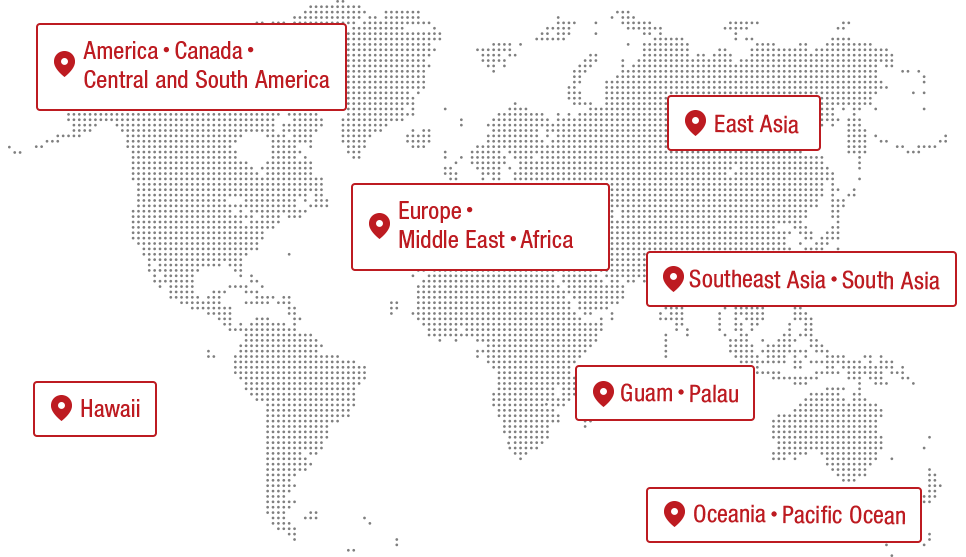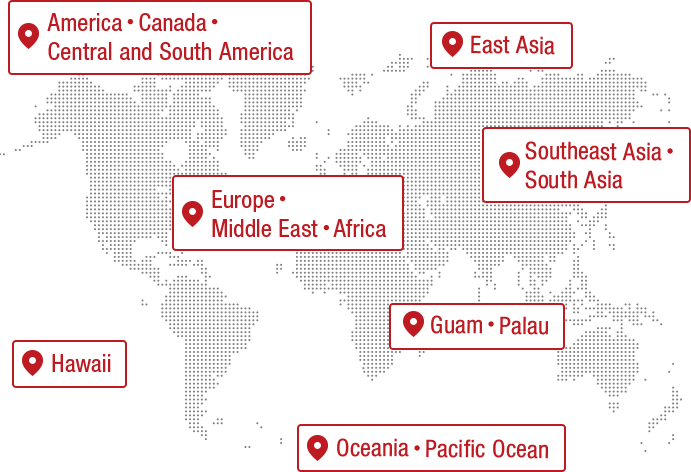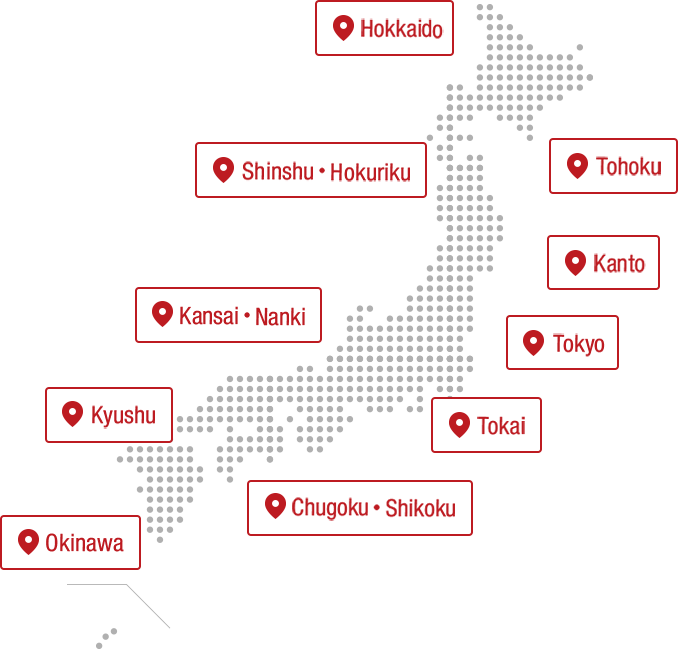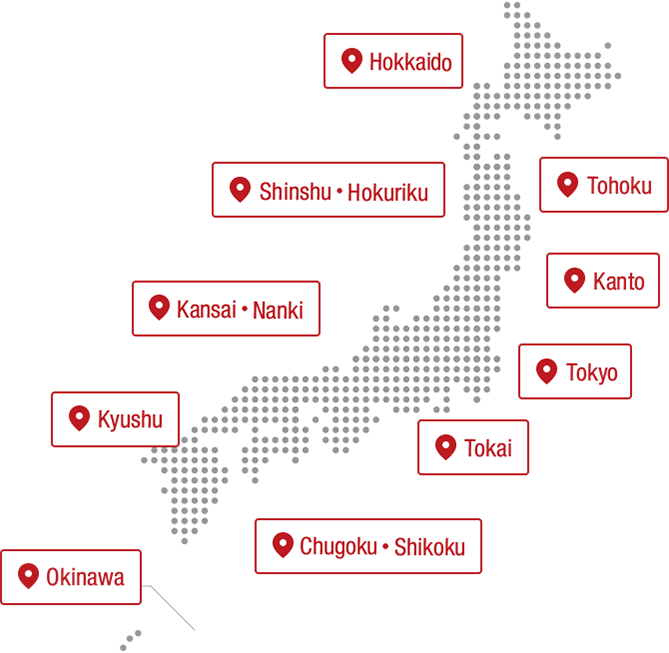In the second half of the article, we will select "recommended items to buy" within a budget of 3,000 yen, and tell you about the appeal of each food item along with a taste test report. By the end of the article, you will not only be more knowledgeable about antenna shops, but you will also have a deeper love for the local area.
More than 1,000 delicious dishes and cuisines on display in a golden space
This time we focused on Ishikawa Prefecture. We visited Ishikawa Hyakumangoku Monogatari Edo Main Branch, which opened in October 2014 and was renovated and reopened in March 2020. The nearest station is Ginza-itchome Station on the Tokyo Metro Yurakucho Line, and it is also within walking distance of Yurakucho Station and Ginza Station.

The concept is "Delivering deliciousness and beauty from our Edo main store." Ishikawa Prefecture, located almost in the center of Honshu and facing the Sea of Japan, is one of the most naturally rich areas in Japan, with mountains showing diverse vegetation, coastlines and rivers showing a variety of different expressions, etc. It is also a cultural prefecture where the Kaga Hyakumangoku culture that flourished during the Edo period still lives on.
The store displays 1,000 to 1,200 items of high-quality, delicate products made with traditional techniques and food grown in the rich natural environment and climate. The building itself has a Japanese feel that is characteristic of Ishikawa Prefecture, and is decorated with gold leaf and other gold colors, of which Kanazawa is one of the top producers in the country, creating an elegant atmosphere.

As the prefecture with the best sweets and ice cream in Japan, the level of sweets is top-notch
First, let's start with the first floor, which is the face of the three-floor store. Each floor has a different theme, and this floor has the concept of "The Taste and Craftsmanship of Ishikawa Hyakumangoku." Japanese and Western sweets, tea, traditional crafts, cosmetics, and more are lined up.
The central space is a corner where seasonal products are on sale, with the main focus being Japanese and Western sweets. This is because Ishikawa Prefecture has the highest sweets purchase amount per household in the country, which means there are many confectionery shops and the quality is high. There is a wide lineup of sweets, from traditional famous sweets to innovative sweets.

Among the many products on offer, the most popular at the store is the nationally famous "Nakataya" kintsuba. Other popular Japanese sweets include "Kaga no Shiramine", a monaka filled with Kanazawa's traditional food "kurumi ni" (boiled walnuts), and "Kaga Hachiman Okiage Monaka", modeled after the Kanazawa local toy "Kaga Hachiman Okiage".

Nakataya's "Kintsuba" is priced at 1,144 yen (tax included) for 6 pieces (left, boxed), and 896 yen (tax included) for 5 pieces (right, bagged).

"Kaga no Shiramine" (5 pieces, 648 yen, tax included)

"Kaga Hachiman Okiage Monaka" comes in a pack of three (left) for 594 yen (tax included), and a pack of seven (right) for 1,264 yen (tax included).
In addition, the gold leaf that Kanazawa is proud of is used not only in Japanese sweets but also in food and cosmetics, and it is clear that gold leaf is a motif that represents Ishikawa Prefecture. Because it has an impact, products that use gold leaf are also popular as souvenirs.

"Gold Leaf Yokan" (324 yen, tax included)
One of the most popular snacks is the fried rice cracker called "Beaver." It was released in 1970, the year of the Osaka Expo, and the name was apparently derived from the fact that the shape of two pieces of rice cracker placed side by side resembled the teeth of the beaver figurine at the Canadian Pavilion. Now, more than half a century after its creation, it is known nationwide as a snack representative of Ishikawa Prefecture, and in recent years it has become extremely popular as it is a favorite of NBA player Rui Hachimura.
Hachimura's favorites, the "White Shrimp Beaver" and "Nodoguro Beaver", were rare items that were not regularly available at the store, but from September 2021, they will be available on a regular basis only on the 18th, 19th, and 20th of each month. During these three days, the classic "Beaver" and "Curry Beaver" will also be available in stores.

"Beaver" series. 4 types, 237 yen each (tax included)
As mentioned above, Ishikawa is the number one prefecture in Japan for sweets, but it also has the highest consumption of ice cream in Japan. In addition, the main store of "Maruga Gelato" by Shibano Daizo, the world champion of gelato, is in Noto, Ishikawa, and several kinds of ice cream, including "Maruga Gelato," are sold at "Ishikawa Hyakumangoku Monogatari Edo Main Store."

They also have a bar-type ice cream called "pocapoca ice pop" that can be eaten with one hand, which is also popular for takeout. I tried one of the many flavors available. I chose a photogenic flavor made with apple and orange juice, komatsuna, kiwi, and apple.

"pocapoca ice pop green & fruit" 540 yen (tax included)
This ice bar has a gentle sweetness and a strong fruity acidity. It also has a crisp and juicy texture, making it a refreshing treat.
Ishikawa Prefecture's tea, crafts, and cosmetics all have a sophisticated quality
It is said that the main reason why confectionery culture developed in Ishikawa Prefecture is because Maeda Toshiie, the founder of the Kaga domain, was influenced by the tea master Sen no Rikyu and spread the culture of the tea ceremony. As a result, Ishikawa Prefecture is still one of the largest tea ceremony populations in Japan, and the famous tea "Kaga Bocha" has become a nationally known brand. The store sells about 10 carefully selected types of tea leaves, including "Kenjo Kaga Bocha" from the prestigious "Maruhachi Tea Factory."


"Maruhachi Tea Factory's" Kenjo Kaga Bocha Tea Bag" (left) is 648 yen (tax included), and "Kenjo Kaga Bocha" (right) is 864 yen (tax included)
The lineup of crafts includes Kutani ware, characterized by its vivid painting. Small plates and sake cups are especially popular, but recently glasses with Wajima lacquer and maki-e lacquerware have also been selling well as small luxuries to enrich stay-at-home life.

"Kutani ware lucky small plates" 1,100 yen each (tax included)

"Kutani ware lucky chocolate" 1,320 yen each (tax included)

Beer glasses 9,900 yen (tax included), wine glasses 13,200 yen and up (tax included)
Cosmetics made with materials related to the prefecture are especially popular. Representative examples include gold leaf from Kanazawa, Japanese cypress and red sea cucumber from Noto, and Kokuzo Yuzu from Nomi. Each product has a cute, stylish, or fashionable design, which is said to be the reason why they have so many fans.


The cosmetic series using Noto's red sea cucumbers includes lotion for 3,000 yen (tax included), soap for 1,980 yen (tax included), and hand cream for 1,320 yen (tax included).

"WANOWA" hand cream made with Kunizu Yuzu costs 2,200 yen (tax included), and milk lotion costs 2,750 yen (tax included)
In the basement, there are plenty of delicacies other than sweets
From here, you can head to the basement floor, which has the concept of "The Blessings of Ishikawa Satoyama Satoumi." This floor allows you to enjoy ingredients and food culture, including processed foods made with the bounty of the mountains and sea, local gourmet food, and local sake and seasonings born from the unique fermented food culture.

Seafood is especially plentiful, with a wide selection of refrigerated, frozen, and room temperature products. Popular items include seared yellowtail and the delicacies "kuchiko" and "konowata." Other unique dishes include "ishiru-boshi," made with the local fish sauce "ishiru," and Kanazawa's specialty, loach kabayaki.

"Seared Yellowtail" (left) and "Seared Yellowtail with Salt Koji" (right) are both 1,620 yen (tax included)

"Konowata" (left) 1,620 yen (tax included), "Kuchiko" (right) 1,890 yen (tax included)

"Wajima Gotsuo Fugu Ishiru Dried" 1,382 yen (tax included)

"Sakana no Takumi's Grilled Loach" 1,620 yen (tax included)
Other than seafood, the "Kanazawa Curry" familiar from GoGo Curry and Champion Curry, "Jibunni" cooked with duck meat, "Kadoyaki" flour dish made with lotus root, and the fragrant "Yaki-inari" are particularly popular. There are about 25 kinds of curry on display at any one time, and they are considering holding tasting events depending on the situation.

Ready-made curry is available from the 300 yen range, and the original "Champion Curry" is also available in chilled form in the refrigerated section (378 yen including tax for both room temperature and chilled).

"Kanazawa・Aoki Etsuko's Chicken Jibu" (left) 1,080 yen (tax included), "Kanazawa・Aoki Etsuko's Duck Jibu" (center) 1,404 yen (tax included), "Kanazawa・Aoki Etsuko's Noto Bamboo Charcoal Salt Chicken" (right) 1,188 yen (tax included)

"Kadoyaki" 1,620 yen (tax included)
Ishikawa Prefecture is also famous for its rice, which is said to be a million koku. There are many fine sakes, especially Japanese sake, and most of the 36 operating breweries are available in the store's sake section. One famous brewer from Ishikawa Prefecture is Noto Toji, one of the four great master brewers in Japan. Among them, Noguchi Naohiko, who is considered one of the four heavenly kings and is also known as the "god of sake brewing," has produced a fine sake called "Noguchi Naohiko Laboratory" that fans will drool over.


The products of "Noguchi Naohiko Laboratory" are basically always on sale except for limited editions (720ml 2,200 yen and up, tax included). This store is said to be the only one in Tokyo that carries such a wide selection.
Currently, Ishikawa Prefecture is putting the most effort into its original sake rice variety "Hyakumangoku no Shiro," which took 11 years to develop and debuted in 2020. The store is also strongly promoting brands made with this sake rice. They offer a 720ml bottle and a more convenient 300ml bottle, so we recommend trying this one first.

The second floor is an event space based on the concept of "Ishikawa Travelogue." There are tourist information guides and traditional craft exhibitions, and workshops and PR events are held as needed. In addition, at the tourist counter, a dedicated concierge will provide detailed information on the attractions of Ishikawa Prefecture, including each spot, food, and events, and will also be happy to give advice on travel plans.

A selection of recommended items that can be purchased for a total of 3,000 yen!
This time, all the recommended items selected for a total price of 3,000 yen or less (3,300 yen including tax) are food. In addition to the standard items, we have selected items that are particularly popular at the store.

First, the best-selling food item on the basement floor is the "yaki-inari" (sold in the frozen section). It is also popular because it comes in a variety of fillings, including chicken and burdock, scallops, and five grains. Of these, I chose the classic chicken and burdock.

"Frozen grilled inari with chicken and burdock" (432 yen, tax included)
Another appealing feature is the convenience of being able to cook it in the microwave right from the bag. It can be cooked for about 2 minutes at 500W, but the more recommended recipe is to take it out of the bag and bake it in a toaster oven. When I finished it this way and tasted it, the thick fried tofu was crispy and fragrant, yet the broth was soaked in and it was juicy. The vinegared rice with chicken and burdock was chewy and had a gentle taste with just the right amount of acidity.

Next up is "Seasoned Red Sea Cucumber." I heard that the ones that live on rocks are red and the ones that live in sand are blue. The ones that live on rocks require more strength to eat, so they grow to have a harder texture, and apparently the people of Ishikawa prefer them. They are indeed crunchy and chewy, with an elasticity reminiscent of horumon. Their distinctive flavor is a savory sourness similar to sanbai vinegar, and is refreshing.

"Seasoned Red Sea Cucumber" (486 yen, tax included)
The "Kanazawa Pickles" series is a very popular vegetable processed product. The local products made with Kanazawa lotus root and golden bell pepper are also popular, but this time I chose the beautifully colored "Mixed" pickles. The pickles contain daikon radish, cucumber, carrot, red and yellow peppers, ginger, and chili pepper, and have a moist and soft texture. The mild sweet and sour flavor makes them a great snack to have as a palate cleanser between meals.

"Kanazawa Pickle Mix" (756 yen, tax included)
Next is the aforementioned "White Shrimp Beaver," which is characterized by its use of Hokuriku ingredients, including glutinous rice from the Hokuriku region and white shrimp from Toyama. The secret to its deliciousness is the crispy texture, the elegant aroma and sweetness of the white shrimp, and the soft umami of the kelp.

"White shrimp beaver" (237 yen, tax included)
And for sweets. In the basement, where the freezer is located, they also stock frozen fresh sweets, from which we picked out the traditional sweets "fu manju" and "odamaki." As they are frozen, both last for a long time, and they come in a wide variety of flavors, so they are easy to buy individually, which is another reason for their popularity.

"Fu Manju with bean paste" (235 yen, tax included), "Odamaki with black rice and walnut paste" (183 yen, tax included)
The main feature of the "Fu Manju" is that it uses raw wheat gluten, and the chewy texture of the dough is different from that of ordinary manju or dango, making it appealing. It is moist and soft, and goes well with the simple sweetness of the bean paste. On the other hand, the "Odamaki" is a chewy dough with a rich flavor of black rice, matched with white bean paste with a fragrant and crunchy accent of walnuts.

Lastly, it is no exaggeration to say that Nakataya's kintsuba is one of Japan's most representative kintsuba. It comes with a gift bag, so it is useful for various occasions such as gifts. Nakataya's kintsuba also has limited editions made with Gorojima Kintoki and Noto chestnuts depending on the season, but the plain flavor made with Dainagon Azuki beans can be purchased all year round.

"Kintsuba 5 pieces in a bag" 896 yen (tax included)
It has an exquisite texture that is crumbly yet keeps its shape. It has a delicate touch that melts softly while still retaining the graininess of the red beans, and it has a gentle sweetness. Overall, it has a very refined taste.

Finally, we received a comment from a staff member, who said, "Although some events may be canceled or postponed depending on the situation, we hold experience classes related to seasonal festivals and food events featuring seasonal flavors. We also have limited edition gourmet foods such as ankoro mochi, which is only available on the 5th and 6th of each month, and sasa sushi, which arrives every weekend, so please be sure to stop by when you visit Ginza."

Staff member Miho Aburaya
*The mask was removed only for the photo shoot.
Ishikawa Prefecture is filled with elegant culture and beautiful nature, including Kenrokuen Garden, Kanazawa 21st Century Museum of Contemporary Art, Shiroyone Senmaida, and Chirihama Nagisa Driveway. There is also a wide variety of delicious food and sake, and if you visit this store, you will definitely want to go there. The "Ishikawa Hyakumangoku Monogatari Edo Main Store" is a place where you can get excited thinking about future travel plans.
Ishikawa Million Stone Story - Edo Main Store
| address | : | TH Ginza Building, 2-2-18 Ginza, Chuo-ku, Tokyo |
|---|---|---|
| phone | : | 03-5579-5890 |
| open | : | 10:30-19:00 *Times are subject to change. Please contact us for details. |
| Closed Day | : | none |
| web | : | https://100mangokushop.jp/ |
Text and photos: Hideaki Nakayama
Other "Antenna Shop Expert" articles can be found here
- Experts on Antenna Shops: "Tottori-Okayama Shinbashikan" Edition - The best of both prefectures
- Antenna Shop Expert "Shinjuku Miyazaki-kan KONNE" Edition ~Comparing Cheese Buns~
- Antenna Shop Expert "Hibiya Shimanekan" Edition ~Connecting Food and Beauty~
- Antenna Shop Expert "Shin Ehime" Edition ~ First Tasting Experience of ○○ ~
The contents published are accurate at the time of publication and are subject to change.












